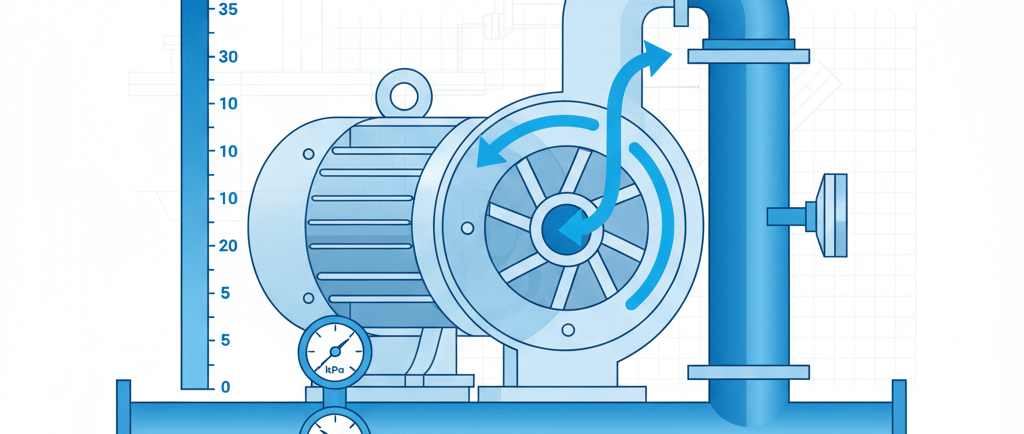How to Calculate Pump Head — Formula, Example, and Free Pump Sizing Tool
Learn how to calculate pump head using formulas, step-by-step examples, and an easy Pump Sizing Tool. Ideal for engineers, technicians, and students.
11/16/20252 min read


1. Introduction
Selecting the right pump is impossible unless you know the required pump head. Incorrect calculations lead to low flow, frequent pump failures, and high energy costs.
In this guide, you’ll learn:
What pump head means
The formula for total dynamic head (TDH)
A simple example
And you’ll use our free Pump Sizing Tool to calculate head & power instantly.
Let’s begin.
2. What is Pump Head?
Pump head is the height (in meters or feet) to which a pump can raise a fluid.
It includes:
Static head
Friction losses
Pressure head
Velocity head
In simple terms:
👉 Total pump head = total resistance the pump must overcome to move the fluid.
It is the most important parameter when selecting a centrifugal pump.
3. Formula for Pump Head (Total Dynamic Head – TDH)
TDH = Static Head + Friction Losses + Pressure Head + Velocity Head
Where:
Static Head = height difference between source and destination
Friction Losses = losses in pipes, bends, valves
Pressure Head = (P₂ – P₁) / (ρg)
Velocity Head = v² / (2g)
For most practical engineering problems:
👉 Velocity Head is small and often ignored.
4. Example Calculation
Problem:
Water is pumped from a tank 5 m below ground to a tank 18 m above ground.
Pipe friction losses = 7 m
Pressure difference = 1 bar
Solution:
Static Head = 18 – (–5) = 23 m
Friction Loss = 7 m
Pressure Head = (1 bar × 10 m) = 10 m
TDH = 23 + 7 + 10 = 40 m
So the pump must provide 40 meters of head.
5. Use Our Free Pump Sizing Tool
Skip the manual calculations.
👉 Try our free Pump Sizing Tool to automatically calculate:
✓ Total Head
✓ Power Required
✓ Flow Estimate
6. Recommended Tools
These tools help with pump installation, testing, and troubleshooting.
1️⃣ Best Digital Manometer (for pressure measurement)
✔ Quick pressure reading
✔ Ideal for pump discharge testing
✔ Lightweight & accurate
👉 Visit Product Page
2️⃣ Vibration Analyzer (for pump diagnostics)
✔ Detects misalignment & bearing issues
✔ Reduces downtime
👉 Visit Product Page
3️⃣ Flow Rate Tester (clamp-on ultrasonic)
✔ No cutting pipes
✔ Fast flow measurement on-site
👉 Visit Product Page
7. Frequently Asked Questions
Q1. What units are used for pump head?
Usually in meters (m) or feet (ft).
Q2. Does pump head depend on pipe diameter?
Yes—smaller pipe = higher friction = more head required.
Q3. Is higher pump head always better?
No. Oversized pumps cause noise, energy loss, and early failure.
8. Conclusion
Correct pump head calculation ensures the pump delivers adequate flow, avoids overheating, and stays efficient for years.
Use the formula explained above or the Pump Sizing Calculator for fast and accurate results.
Affiliate Disclaimer
This post contains affiliate links. We may earn a commission at no extra cost to you.
